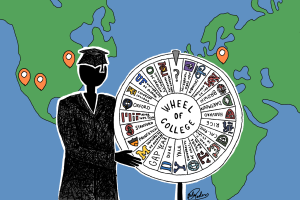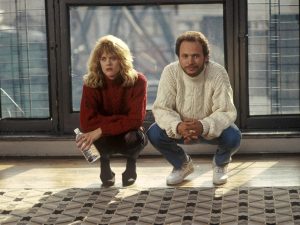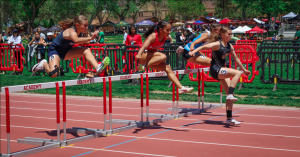Returning to School is too Dangerous for Now
In-person classes are simply not practical yet.
October 13, 2020
While many teachers and students may be looking forward to a return to in-person classes, it simply isn’t feasible. Consider the fact that the school closed its doors in March when there was a single case in New Mexico with whom a member of the extended Academy community may have been in contact. According to the New Mexico Department of Health, there have been almost 29,000 coronavirus cases in New Mexico, with almost 6,500 cases in Bernalillo County alone. So why then would we consider returning to in-person classes?
Academy says that it has invested more than $750,000 “in enhanced COVID-19 safety measures” including a new HVAC system and air purifiers in every room, but these measures aren’t enough. The items the school has invested in do not reduce overall contact size. Given the amount of space available to the school, Academy could have invested $750 million and it wouldn’t have made a difference. There is simply a limit to how effectively the school can enforce social distancing in a large student population. With each student in two classes of around 12 students, each student should be in contact with only 22 other students. However, each of these 22 students is in contact with another 11 different students, who are in turn in contact with at least another 11 different students. Just accounting for 3 degrees of separation, the contact size per student is the entire student population.
If we account for the faculty, students, and staff on campus, we can conservatively say that there are around 1,500 people on campus each day. Assuming that Academy students are relatively safe and only closely interact with an average of 4 other people regularly outside of school, there are 6,000 people within 1 degree of separation of someone regularly on campus. Combined with the 1,500 people on campus, Academy has a 1 degree of separation contact size of 7,500 people. This means that if any one of those 7,500 people gets COVID, it is likely that someone who goes on campus regularly will also get it.
The NMDOH predicts that around 14 people out of 100,000 will get COVID-19 per week in Bernalillo county in late October and early November. While there is only a 0.014% chance that a given person in Bernalillo County will get COVID in a week, an event that is low probability per individual becomes relatively likely across a large population. The probability that there is at least one case within 1 degree of separation of the Academy in the first week of reopening is 65%. This is the equivalent to rolling a die and hoping for a 1 or a 2, knowing that any other number leads to chaos. If we look at this over a two week period, we see that the probability of at least one case in the broader community is 88%. By the third week, it is 95%.
One flaw with these estimates is the assumption of independence between cases, meaning that if a single person in the community gets coronavirus, the assumed probability of a second case in the community is still 0.014%. In reality, with a single case in the community, the probability of a second case is even higher, meaning that the estimates above can only provide a baseline and the reality of the situation will be much less favorable.
A single case among this 1 degree of separation group is highly likely to lead to multiple cases among the students, faculty and staff regularly coming to school. While the school has plans to symptom track students, multiple studies have shown that coronavirus is still transmittable days prior to any evident symptoms. The only way for the school to truly prevent spreading would be to administer coronavirus tests to every student every three days. This is simply not logistically nor economically feasible.
These estimates assume that Academy students are only interacting with their nuclear families. This is not the case. Some students are working at jobs and many are participating in club sports or other formal and informal group activities. While the Academy can enforce some social distancing at school, the administration is taking no steps to control students outside of school. Academy students, like most teenagers, often make poor decisions, and many of these decisions will result in greater levels of exposure.
Academy is not a closed community. The health of the Academy is tied to the health of New Mexico. As state-wide restrictions relax, New Mexico will see another spike in cases, leading to even higher rates on campus. In the process of considering a return, we cannot just consider ourselves. It is our responsibility to not return to in-person classes in order to protect the overall health of Albuquerque, which will suffer as more and more businesses return. Academy is one of the few schools that actually has the ability to provide high quality remote schooling. This allows for a continued high level of education, while protecting our students. By staying online, we reduce the total cases in the broader Albuquerque community.
So while the administration is under pressure by many parents demanding a return to in-person classes, a return is simply not safe for the students, faculty, staff and state. If we in fact return, we will see multiple cases on campus within the first few weeks. A return to school will undoubtedly lead to multiple cases on campus, and possibly even deaths. According to the CDC, 3% of all cases result in death. While many of the people on campus are young and unlikely to die from coronavirus, the Academy community also consists of many older men and women, as well as many people with preexisting health conditions, all of whom are much more vulnerable to COVID-19. What amount of risk are we willing to accept? How many lives is in-person education worth? By returning to in person classes, the Academy would assert that the health of our population and even the lives of our faculty and staff are worth less to us than a small uptick in the quality of education.








Diego Sanchez • Oct 15, 2020 at 8:58 am
Though kids have such a rare chance of getting anything deadly, think about the teachers. We would also, because there are a LOT of students here, spike the virus. Imagine 500 kids carrying COVID undetected. Love the report!
Stephanie Lipkowitz • Oct 14, 2020 at 2:59 pm
I am proud of both student writers for making such compelling arguments. Unfortunately, I think that you are both right in many ways. Kids need to be in school, parents need their students to be in school, and there are risks to coming back, especially for vulnerable people. There is no absolute solution that will solve all of the issues.
I miss the students on campus; it makes me sad to see the empty buildings and the silence is such a reminder of what we are all missing: student laughter, student voices, and student joy.
Cindy Stofberg • Oct 14, 2020 at 10:10 am
I don’t understand the math, so I can’t say I support this position, but I commend you for thinking about the health (and lives) of others and not just what’s best for you. Impressive as always, Quinn!